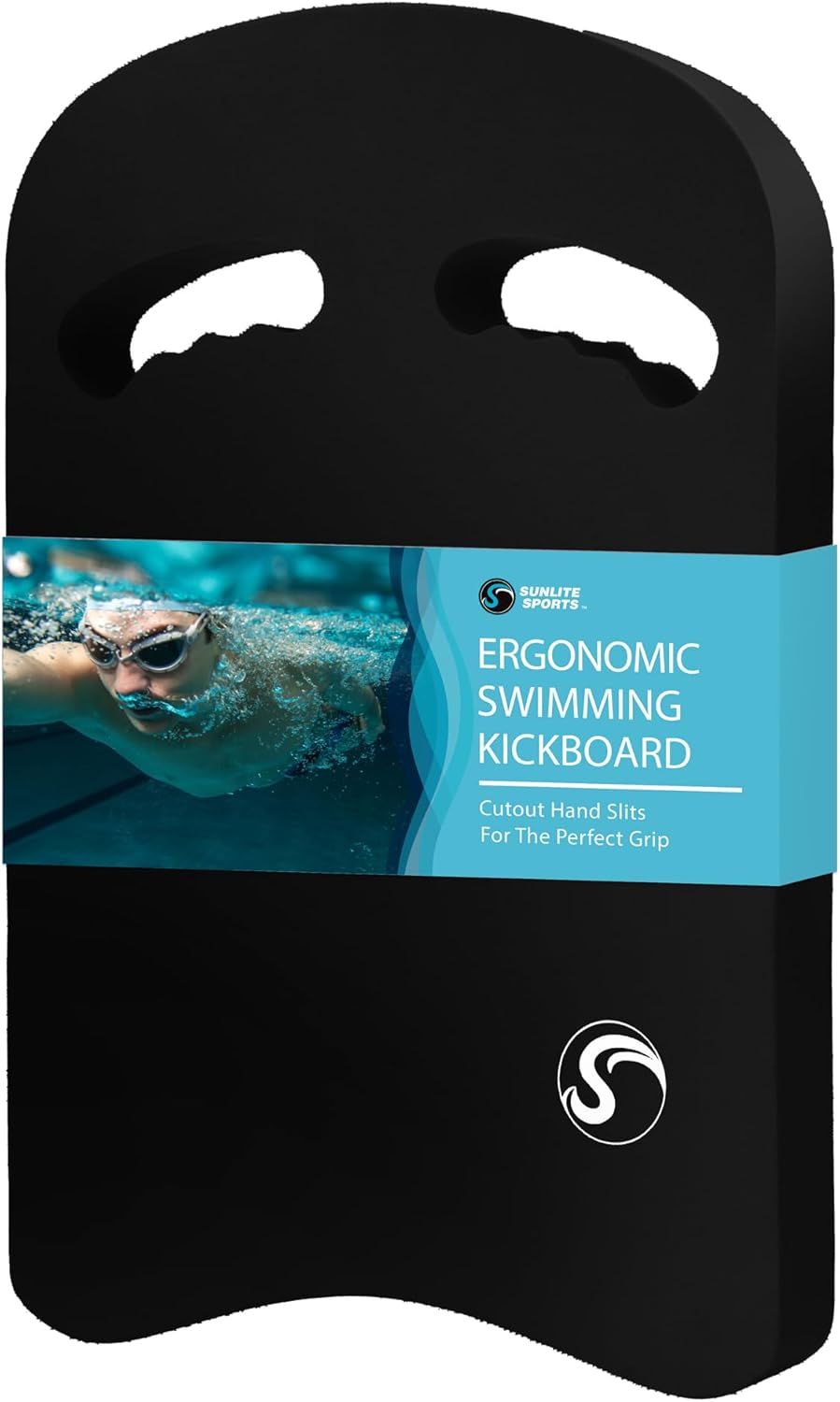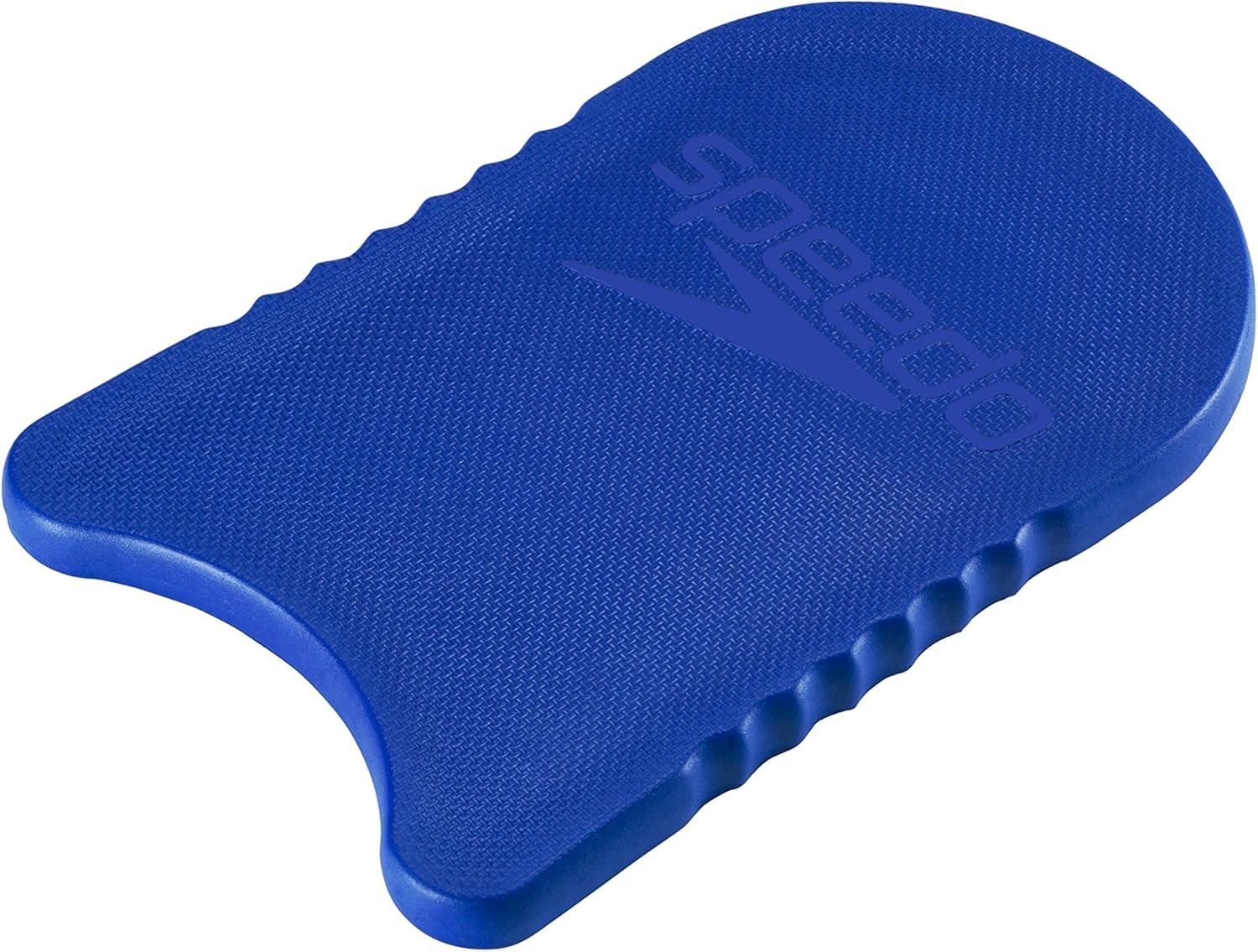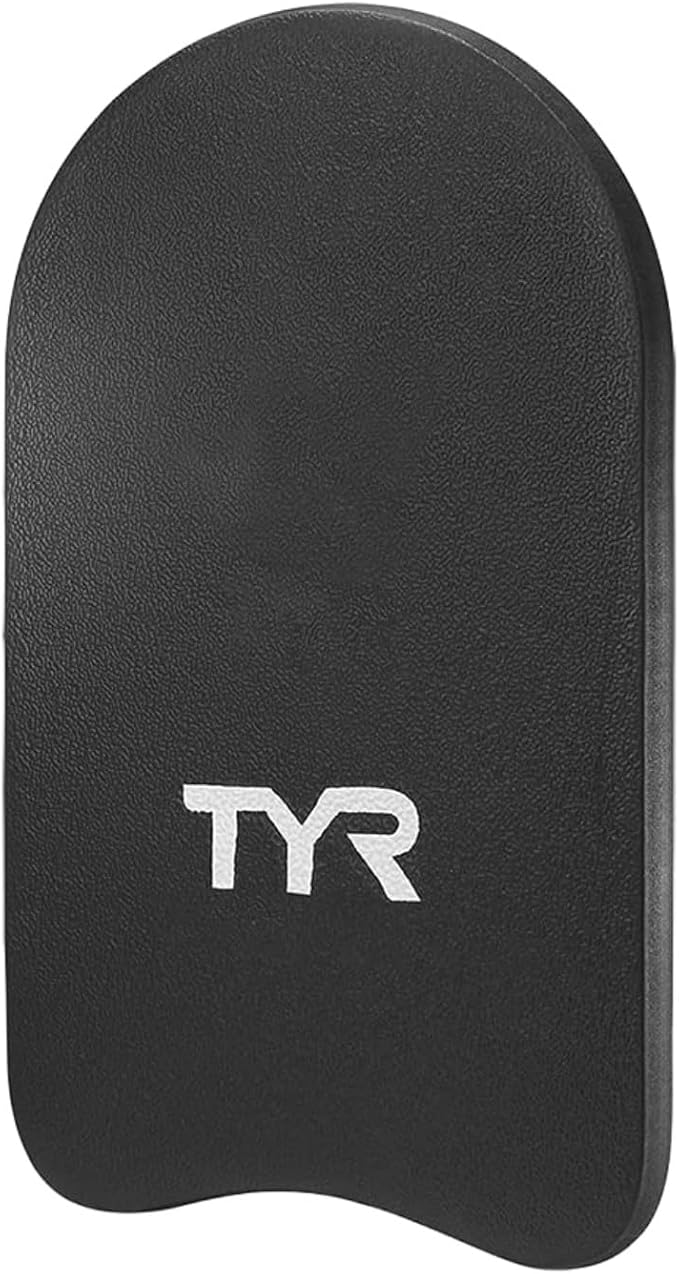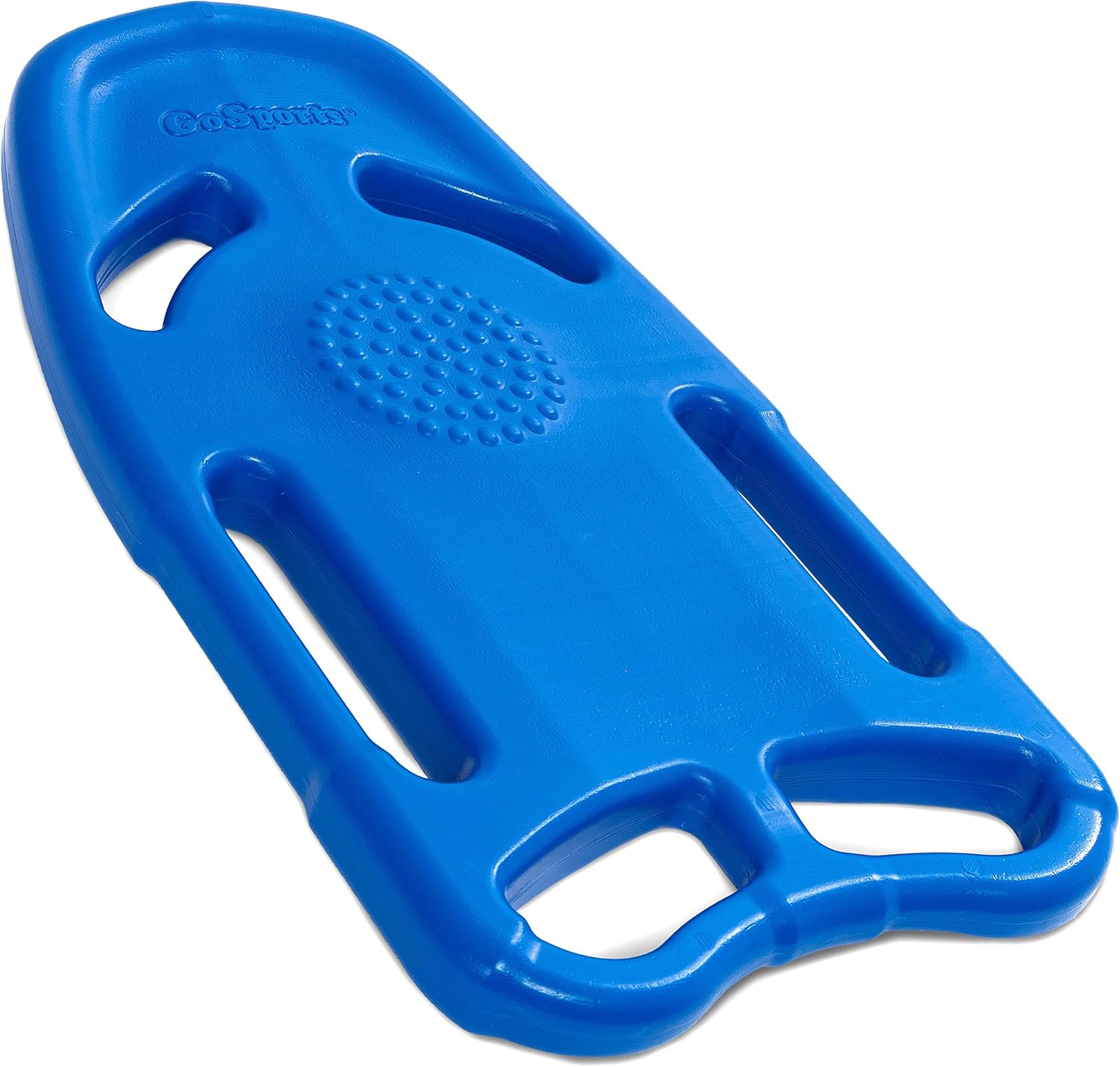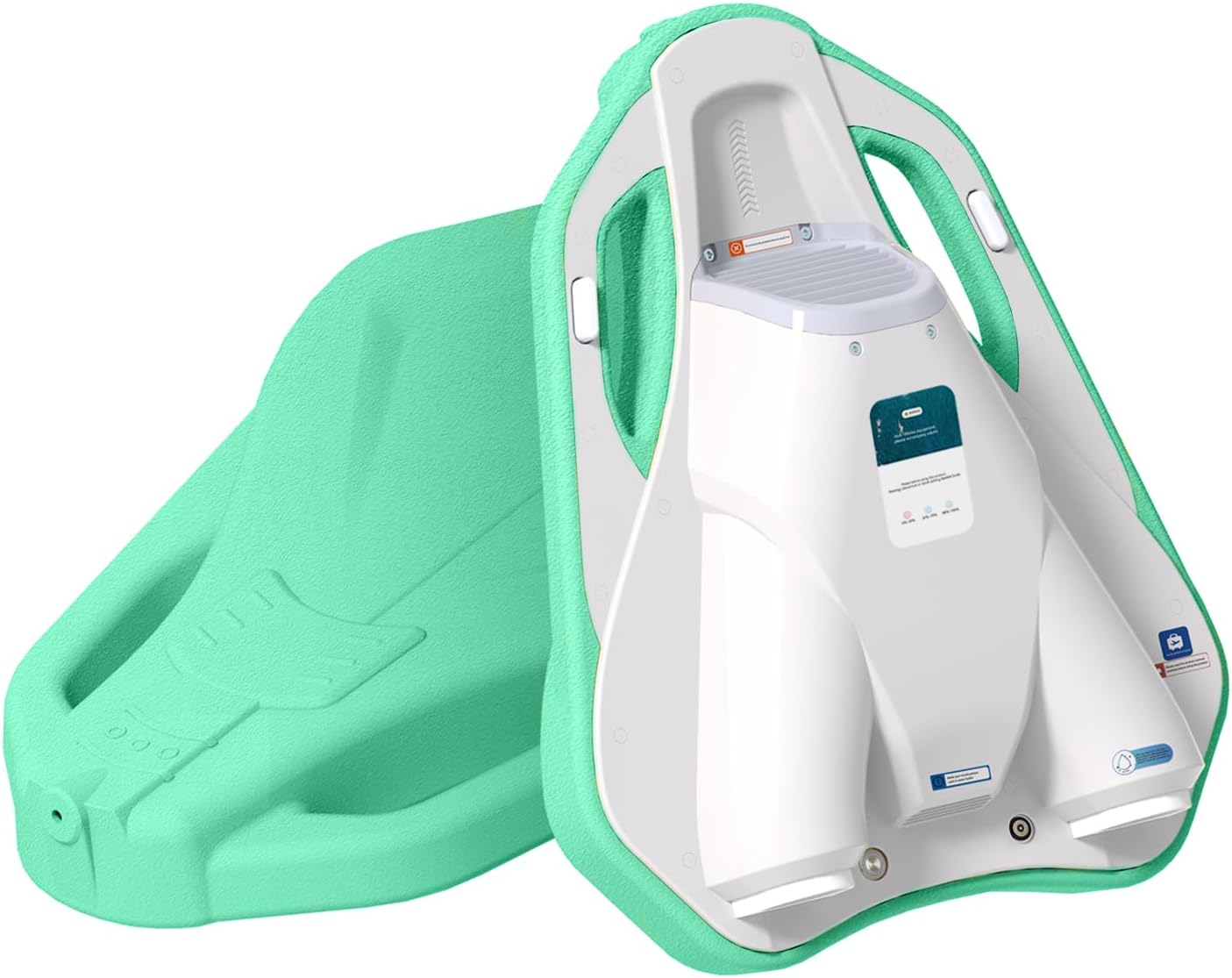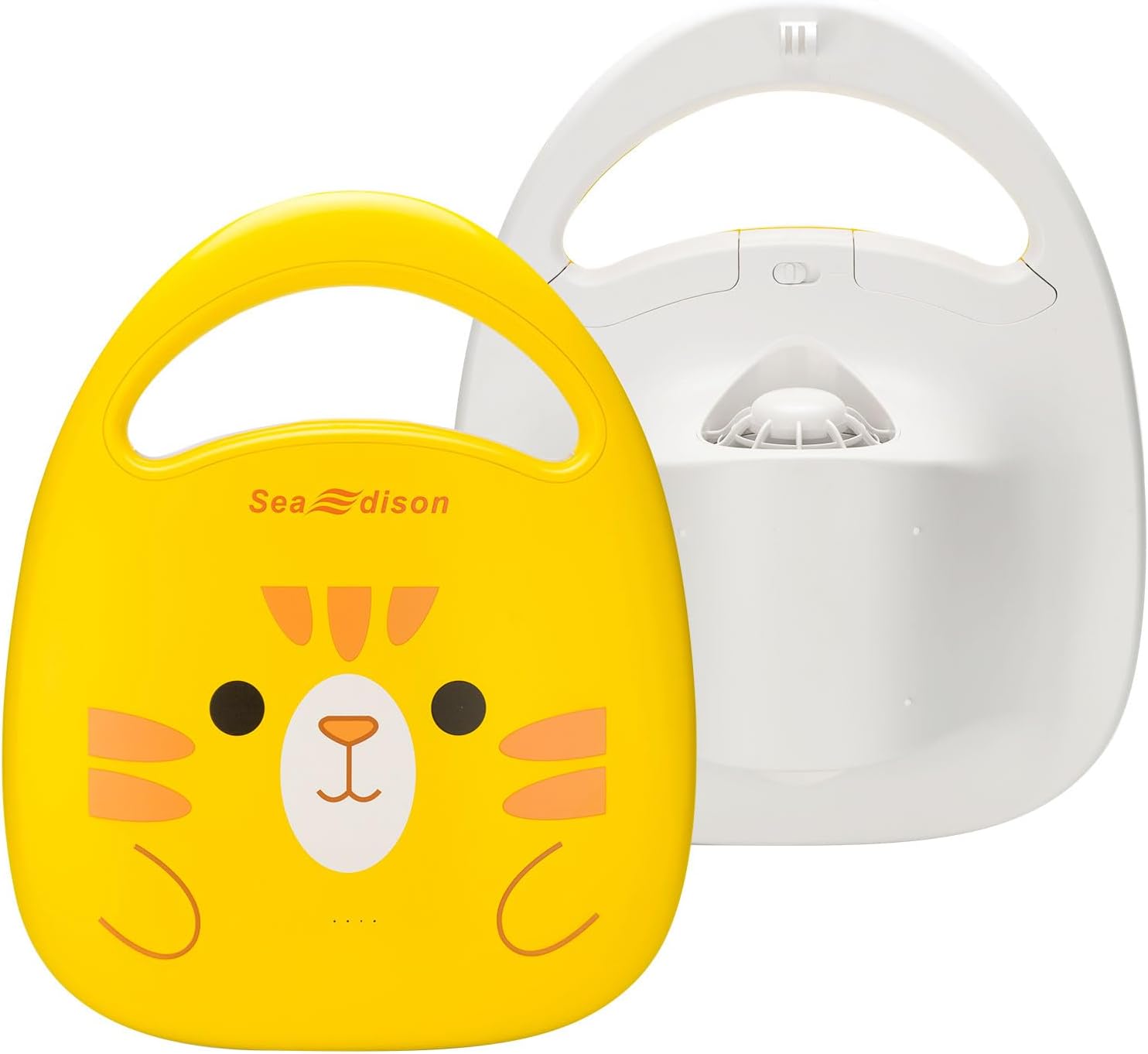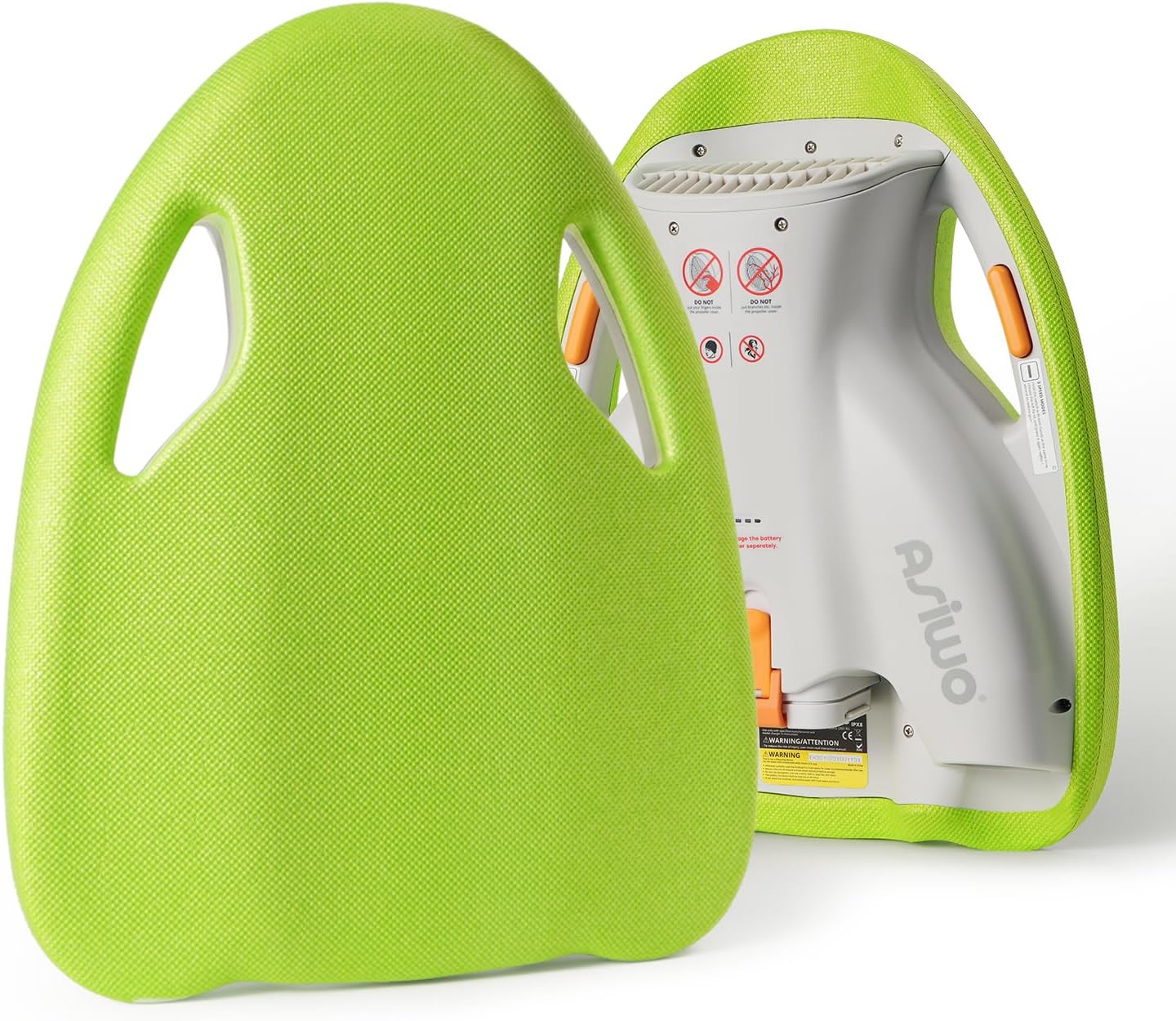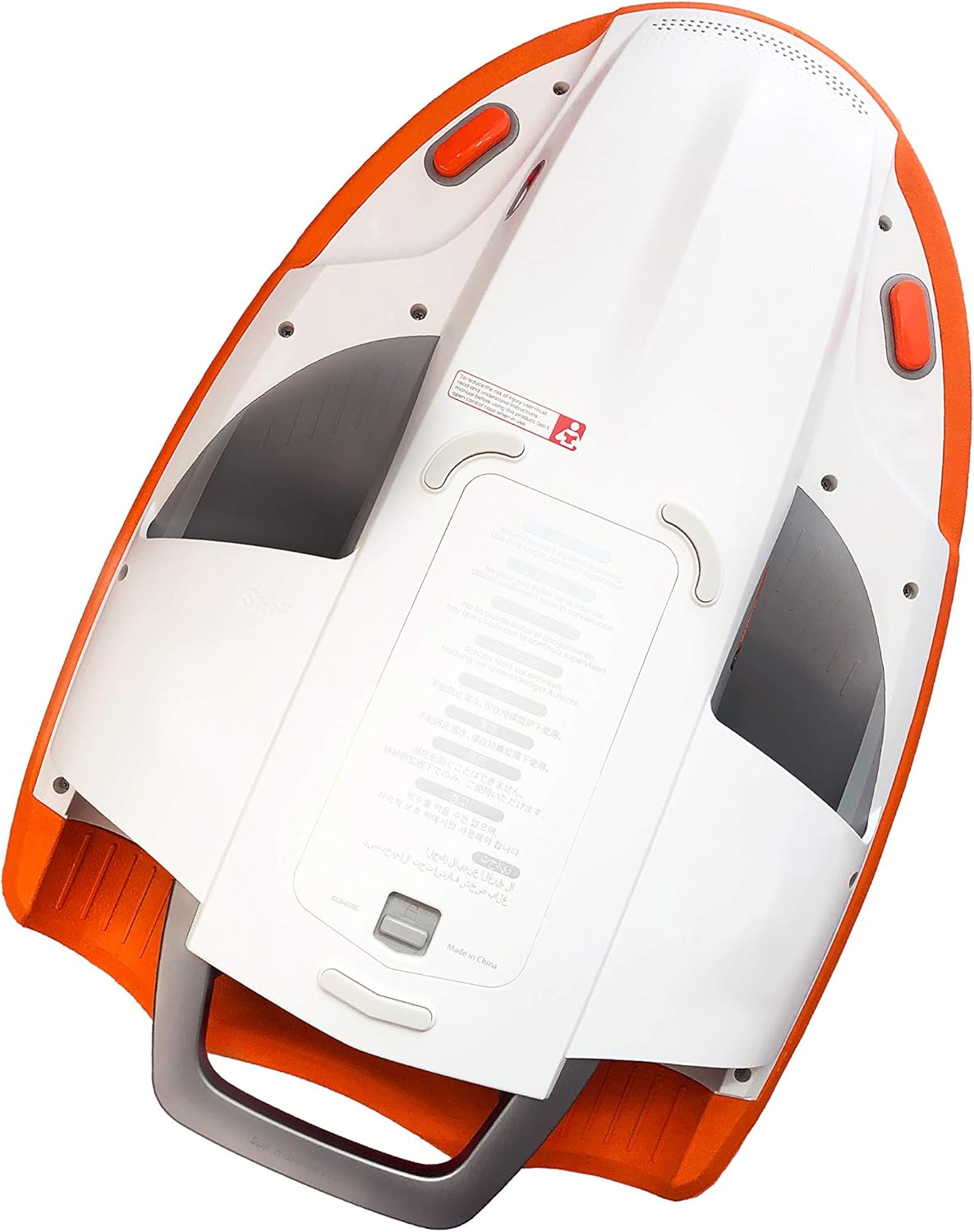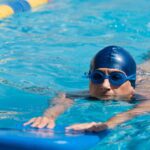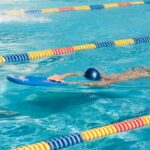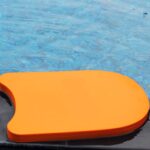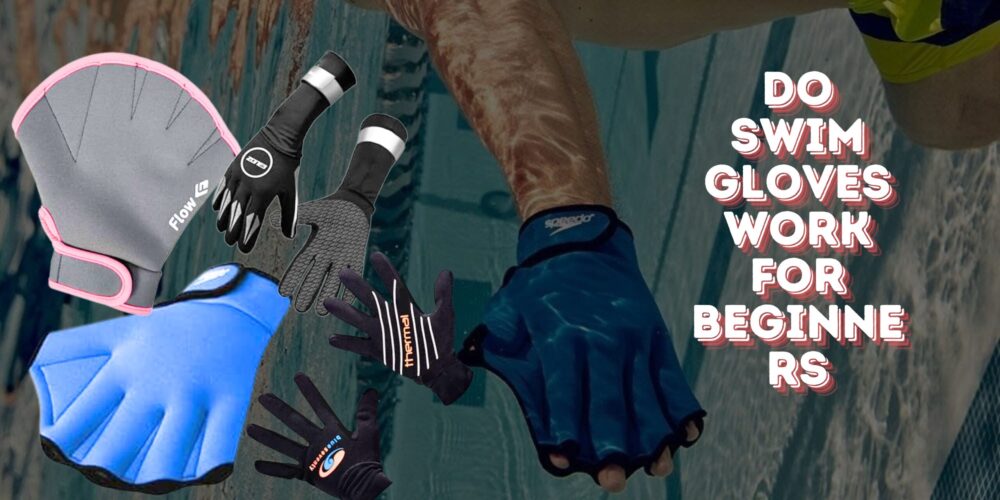Kickboard Swimming For Beginners
Kickboard swimming for beginners can feel a bit like trying to pat your head and rub your stomach at the same time: the movement looks simple from the outside, but the moment you grab that floating rectangle, you discover muscles you never knew existed.
Picture it: you hop in the pool, clutch the board with confidence, push off the wall, and within ten meters you’re kicking like a frantic duck while wondering why your legs feel like anchors.
Every beginner has been there, and this guide will walk you through not just how to use a kickboard, but how to make it a tool that builds skill, fitness, and confidence without unnecessary pain or frustration.
what exactly is “Kickboard swimming for beginners”?
Kickboard swimming for beginners is the practice of using a buoyant foam board during swim training to isolate the lower body and develop a stronger, more efficient kick.
For new swimmers, it provides stability, builds water confidence, and allows them to focus on leg movement without worrying about arm strokes or full coordination. In short, it’s a foundational tool for learning proper body alignment, breathing, and propulsion in the water.
It’s not just about kicking aimlessly until your legs feel like noodles. Done correctly, it helps refine your flutter kick, strengthens your core, improves endurance, and develops the muscle memory that carries over into freestyle, backstroke, and even competitive swimming.
Simply put: Kickboard swimming for beginners is both a confidence booster and a technical stepping stone. Beginners learn how their body moves in water without the complexity of full strokes, while more advanced swimmers use it for targeted leg training.
|
|
|
|
How to Use a Kickboard the Right Way
Swimming kickboard how to use properly? Here’s a simple breakdown:
- Push off the wall with the board extended in front.
- Find your streamline and body line before starting to kick.
- Maintain steady flutter kicks for a set distance.
- Breathe rhythmically, switching between face-down and side-breathing as you improve.
- Rest at the wall, then repeat with control, not exhaustion.
Keep sessions short at first: four to six lengths of 25 meters, before building up.
The Benefits of Kickboard Swimming for Beginners
The kickboard swimming for beginners benefits extend far beyond just making your legs stronger. Some of the most practical and evidence-based advantages include:
- Leg strength and endurance: The repetitive flutter kick builds muscle in the quads, glutes, calves, and hips.
- Improved ankle flexibility: A flexible ankle improves propulsion, which directly translates into faster, smoother swimming.
- Cardiovascular conditioning: Kick sets can be tailored to raise your heart rate and build stamina.
- Confidence and balance: Holding the board provides buoyancy and stability, allowing beginners to feel safe while focusing on their form.
- Technique isolation: Separating leg movement helps swimmers master one piece of the puzzle before combining everything into a full stroke.
It’s also widely used in rehabilitation and low-impact fitness programs, which makes the kickboard not just a beginner tool, but a lifelong ally in swimming.
Common Issues with Kickboard Swimming for Beginners
When people first start kickboard drills, their struggles usually fall into predictable patterns:
- Neck and back pain: Caused by keeping the head up too high.
- Sinking hips: The body drags instead of gliding, which wastes energy.
- Bicycle kicking: Bending knees excessively and pushing water down instead of backward.
- Ankle stiffness: Limited motion leads to splashing instead of smooth propulsion.
- Early fatigue: Without pacing, beginners burn out after just one length.
Each of these issues has a fix, and addressing them early prevents bad habits from becoming permanent.
Proper Body Position with a Kickboard
The first lesson in kickboard swimming for beginners is posture. Many people make the mistake of gripping the board with locked elbows and lifting their head like a prairie dog. This position strains the neck and drops the hips. Instead:
- Keep your head in line with your spine, face slightly down.
- Relax the elbows and let the board float naturally ahead of you.
- Engage the core lightly to keep hips near the surface.
When you glide off the wall, your goal is to feel flat and streamlined. A good trick is to practice push-offs without kicking, simply floating forward to sense proper alignment.
The Flutter Kick: A Step-by-Step Breakdown
Mastering the flutter kick is where most beginners stumble. Here’s how to refine it:
- Drive the movement from the hips, not the knees.
- Keep knees soft with a micro-bend, but avoid cycling.
- Point toes and let ankles stay loose.
- Small, quick kicks are better than big, splashy ones.
If you see water spraying everywhere, that’s wasted effort. A smooth kick pushes water backward, not upward.
Fixing Ankle Stiffness
Rigid ankles are a common obstacle in kickboard drills. Dryland exercises like seated ankle stretches, pointing and flexing with resistance bands, or even simple calf raises improve mobility.
For in-pool assistance, short-blade fins can be a game-changer, giving you immediate feedback and helping condition your ankles to stay flexible.
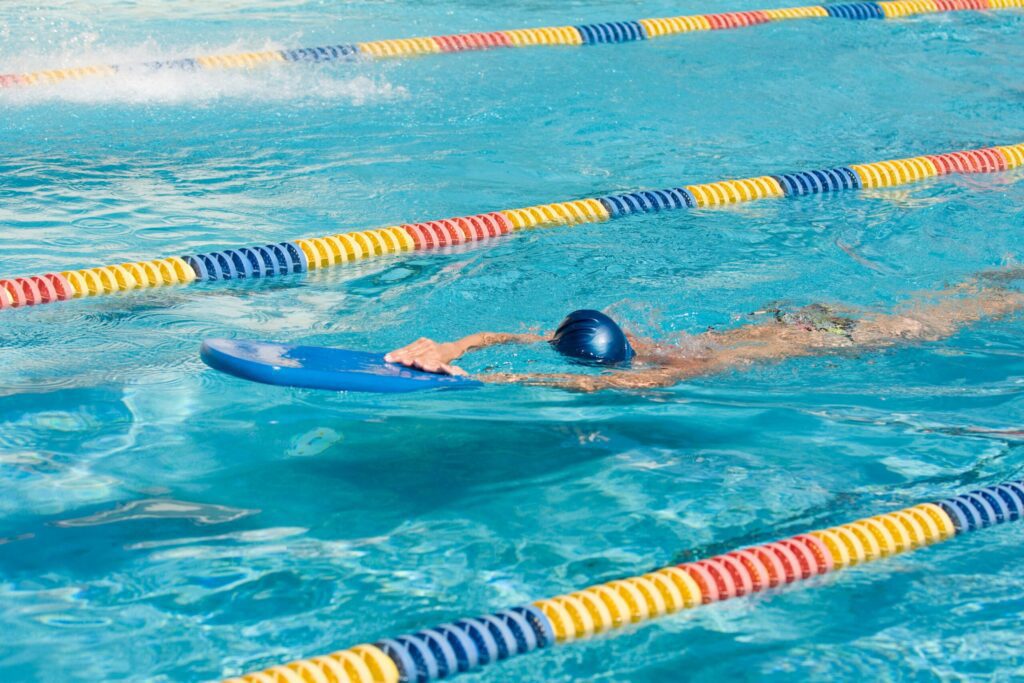
Hand Position and Grip Options
Beginners often clutch the board like a lifeline. Instead, think of it as a partner, not a crutch. Hold the front corners lightly with your arms extended but not rigid.
For advanced practice or if back pain arises, try holding the board vertically beneath the water or resting your forearms on it with your face submerged. Both reduce strain and keep the body more streamlined.
Breathing Without Breaking Form
The board gives you confidence, but it can also trick you into keeping your head above water too long. Instead, practice exhaling underwater and lifting the head only briefly for air. A side-breath, turning slightly like in freestyle, is an excellent habit to build from the start.
Structuring Workouts for Progress
Many beginners wonder: How long should I use a kickboard? The answer depends on your fitness level, but a good starting point is 10–15 minutes per session, split into short sets. For example:
- 6 × 25 meters kicking with 20 seconds rest
- 4 × 50 meters at a steady pace
- 1 × 100 meters as a challenge set
Over time, progress by reducing rest or increasing distance. Consistency builds both technique and stamina.
|
|
|
|
Choosing the Right Kickboard
Not all boards are created equal. A swimming board for adults tends to be larger with more buoyancy, while smaller boards are often better for children or petite swimmers. For beginners, a mid-sized foam board with rounded edges is usually the most comfortable.
Those looking for an upgrade can experiment with hydrodynamic or ergonomic designs. If you enjoy variety, trying the best Electric Swimming Kickboard adds a fun element to practice, though it’s more of a training aid than a necessity.
Adding Fins for Faster Learning
Fins aren’t required, but they can accelerate learning. Short-blade fins teach proper ankle movement and make it easier to hold form without exhausting your legs. Just avoid relying on them too much: use them as a teaching tool, not a crutch.
Troubleshooting Pain and Fatigue
- Back pain: Lower your head, use a smaller board, and engage your core.
- Knee pain: Reduce amplitude, avoid aggressive flexing, and stretch after swimming.
- Foot cramps: Stay hydrated, warm up ankles, and pause briefly if cramps strike.
If pain persists, take a break and consult a coach or healthcare professional before resuming.
Beginner-Friendly Workouts
Here’s a simple four-week progression:
Week 1: 6 × 25m kick, rest 20s. Focus on posture.
Week 2: 8 × 25m, add ankle stretches on deck.
Week 3: 6 × 50m, practice side-breaths.
Week 4: 4 × 75m, aim for smooth, consistent rhythm.
Track your distances weekly. Progress should feel steady but not overwhelming.
Confidence and Pool Etiquette
Nothing rattles a beginner more than joining a crowded lane. Remember basic etiquette: circle swim in the correct direction, allow faster swimmers to pass at the wall, and avoid stopping mid-lane. A little awareness goes a long way in making you feel part of the swimming community.
From Kickboard to Full Stroke
The goal isn’t to spend your whole swimming career hugging a board. Transitioning means moving from kick-only drills to side-kicking, then to full freestyle or backstroke. Think of the board as training wheels: you’ll outgrow it once your legs, rhythm, and balance improve.
Teaching Kids and Nervous Adults
For children, kickboard drills can be turned into games: race to collect pool toys while kicking, or kick to the sound of a timer. For anxious adults, emphasize short sets and focus on breathing control to build trust in the water.
Kickboard Swimming for Fitness and Rehab
Beyond beginners, kickboards are invaluable in water sports rehab and general fitness. They provide a safe, low-impact way to exercise after injuries or surgeries. Doctors and physical therapists often recommend them for rebuilding lower-body strength without joint stress.
Measuring Progress
A simple way to track growth is the “5-minute kick test”: swim as far as possible in five minutes and log your distance weekly. Over a month, most beginners notice improvements in both technique and endurance.
FAQs on Kickboard Swimming for Beginner
Is kickboard swimming only for children?
No, many adults use them for fitness, rehab, and technique work.
How long should I use a board before moving on?
Until you can sustain a smooth kick without back pain or fatigue, usually a few weeks.
Does it actually help me swim faster?
Yes. Stronger, more efficient legs directly reduce drag and improve stroke speed.
What is the best kickboard for swimming?
A mid-size foam board with rounded edges is generally the most versatile option.
The Bottom Line on Kickboard Swimming for Beginner
The real magic of kickboard swimming for beginners lies in its simplicity: a lightweight board, a focused kick, and gradual progression. What begins as a wobbly, splashy effort soon becomes a powerful tool for strength, endurance, and confidence in the water.
Whether you are building basic technique, seeking the kickboard swimming benefits of stronger legs and better stamina, or simply adding variety to your sessions, this humble piece of foam has far more to offer than first meets the eye.
Once you embrace the process, the board stops feeling like a crutch and becomes the bridge to becoming a stronger, smoother swimmer.
